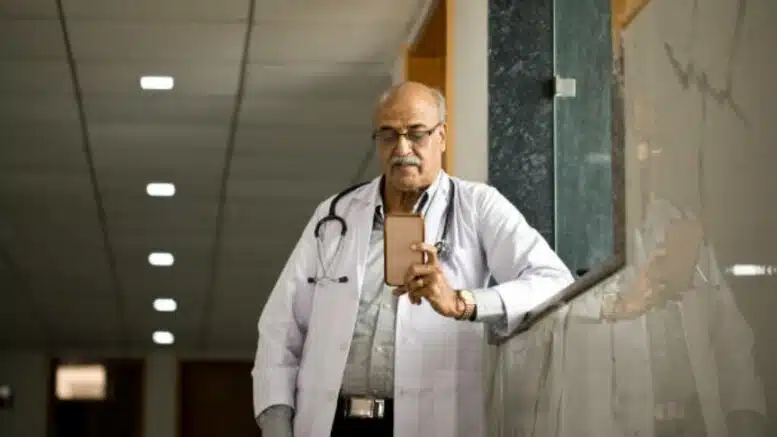Mobile health apps are becoming increasingly significant in today’s era of digital health. Several iPhone applications can aid in patient care and results in various ways, such as by assisting with chronic disease management or facilitating communication between patients and their healthcare providers.
Read on to learn about the many medical applications for the iPhone, as well as how to locate buried apps on your device. We’ll also discuss how to locate the best healthcare apps on the App Store and review some of the most downloaded ones. Finally, we’ll talk about how patients can utilize these apps to take charge of their health.
How Does Healthcare App Help People?
Smartphone apps can be used to track health data, monitor vital signs and even diagnose illnesses. However, most of us are unaware of the hidden apps on our phones that can be used for healthcare purposes. But how do I find hidden apps on my phone and how can they be utilized in healthcare? People may find a doctor or other medical expert in their neighborhood, make an appointment with them, and access their medical records and lab results from the convenience of their own homes with the help of iOS app development services. Those affected by the global pandemic may be able to get health updates and talk to their designated physicians or dietitians via video calls.
Features of an iPhone Healthcare App
The following are some of the features of the iPhone healthcare app:
Register or Sign In
Quick sign-up and sign-in are possible by the use of a user’s email address, phone number, or social network profile like those found on Twitter, Facebook, and LinkedIn. The sign-up process shouldn’t be too tedious, as that will just drive people away from your app in frustration. You should carefully consider the data you’ll need from them and only include optional fields if necessary.
Health tracking
Any iOS health app must provide this feature. Patient’s vitals, including blood pressure, glucose levels, heart rate, caloric intake, and more, can be monitored with this function.
Appointment Booking
One of the most essential features of any iOS healthcare app is the ability to locate and schedule appointments with doctors. Users may quickly check the doctor’s availability, schedule an appointment, and even set a reminder all from one convenient location. Patients will be able to schedule appointments without any added stress. Because of this helpful tool, doctors can quickly and simply check their schedules and make any necessary adjustments.

Doctor and patient profiles
Healthcare apps need to have both doctor and user profiles. Expertise, clinic location, and patient fees might all be included in the doctor’s profile. Hence, patients would be able to locate qualified doctors in their area.
Nonetheless, the user profile can contain details about the person’s identity. This may include their name, age, gender. Even their basic health information such as their weight, height, blood group, and so on. As a result, clinicians will be able to get a more comprehensive picture of their patients, their conditions, and the medications they are taking.
Support for Siri
Now is the moment to add Siri support to your app if you haven’t already. Siri has been upgraded to enhance the speech experience and allow for greater customization, and other features.
Video calls
Thanks to the introduction of video calls, patients and doctors may have instantaneous conversations. Individuals in the suburbs or other far-flung areas can profit from this. This is because they can get the medical attention they need without having to make the trip to a hospital.
Geo-location-based search
Including a geo-location search function allows patients to easily locate nearby medical facilities. If you’re developing a healthcare-related mobile app, you can use Apple Maps to include a geo-search function.
Payment gateway
If your app integrates payment gateways, patients will have an easier time paying for doctor visits and other services. The convenience of next-generation payment methods like Stripe and PayPal for both patients and doctors when it comes to paying bills is a huge boon to the healthcare industry.
Reminders and notifications
Consumers can be kept up-to-date on their prescriptions and medicine consumption with the addition of notification and reminder options. These alerts might be time- or location-based.
Conclusion
The use of iPhone apps in healthcare has been on the rise in recent years. With the help of these apps, healthcare professionals can now access important patient data, communicate with their teams, and even diagnose and treat patients remotely. This technology has allowed for more efficient and cost-effective delivery of care.
